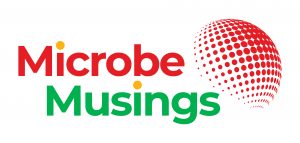Over the past decade, we have seen the rapid growth of microbiome research in relation to the human body. Of special note is the wide range of research that investigates how treatment exposures, such as medications, affect the gut microbiota. Despite millions being treated with drugs that enter the digestive tract, how medications affect the gut microbiota remains substantially understudied.
To look into addressing this problem, I am delighted to be speaking with Dr. Antonio Gomes, Principal Scientist at Xbiome. He talks about the innovative investigations he led at the time he was a Senior Scientist at Memorial Sloan Kettering Cancer Center. This research was recently published at the high-profile scientific journal Cell and offers novel opportunities in improving patient treatment and outcomes. Learn more about what makes studying drug-microbiota interactions so interesting and how they can help with microbiome therapeutics.
PN: So Antonio, what about drug-microbiota interactions inspired you to research on it more deeply?
AG: The human microbiota is a complex community of microorganisms. The microbiota composition itself is complicated enough to study. That’s not considering the complexity of microbial genomes and the interaction with its environment, which includes other species, human cells, and metabolites. These interactions are already complex enough to analyze within a healthy patient. Diseased patients take medications as well, and when ingested they make their way to the gut. Once in the gut, these medications can perturb the gut microbiota. While many mechanisms behind microbiota and drug associations have been described, we still do not know well the complexities of their interactions in a patient’s gut. We hence still need to see how drugs affect the gut microbiota and consequently patient outcomes.
PN: With so many drug types and bacteria, I’m sure that won’t be an easy undertaking. What kinds of questions are you especially interested in?
AG: Well, we know that antibiotics can disrupt bacteria substantially, but we have little knowledge about non-antibiotic drugs. Scientists have showed that many non-antibiotic drugs can inhibit bacterial growth in the lab, or in vitro. However, how this effect translates into a patient’smicrobiota requires further research. Many questions should be addressed to understand the impact or drug exposures in the microbiota and its consequence of patient. For example:
- What wholesale changes to the gut microbiota take place with drug exposure Drugs can affect the gut microbiota in many ways. But the specificity and magnitude of this effect poses many questions. For example, how fast do drug exposures drive changes to the gut microbiota? What species are more vulnerable or more tolerant to a drug exposure? How long do these effects last? We also can refine the questions to consider the dose and the route of administration for a given drug. These are just some of the many questions we can ask as we strive to examine drug-microbiota interactions in vitro and in vivo and see how drug exposure impacts the microbiota.
- Which strains are more sensitive to a given drug? Bacteria within the same species can differentiate themselves by strain. The genetic diversity of each strain may cause strains from the same species to be more or less sensitive to a drug exposure. Even a small genetic difference, such as the presence or absence of a specific metabolic pathway, could have major impacts on how strains respond to a given drug.
- How do microbiota changes caused by a drug affect a patient during treatment? Bacteria can modulate patient outcomes in many ways. They may produce small metabolites that modulate host physiology. They can inhibit the expansion of pathogenic strains. In the gut, they can break down the mucus layer. Bacteria also play an important role in educating the immune system. With so many functions, any perturbations to the gut microbiota driven by a drug will exert wide-ranging effects on host physiology.
Until recently, physicians would pay little attention to the gut microbiota when making decisions. In such cases, a broad-spectrum antibiotic could be considered a good treatment option despite it causing major disruptions to the gut microbiota. By recognizing the importance of the gut microbiota in host physiology, an ideal treatment should focus on treatment approaches that target pathogenic strains while sparing the healthy commensal bacteria. This reasoning applies not only for antibiotics, but to any drug that may impact the gut microbiota. In order to approach these questions with accuracy, we need to be able to decipher microbiota-drug associations from the complex environment that is part of the patient microbiota.
PN: What a large list of questions to answer! I imagine you’d need to develop sophisticated mathematical methods to begin addressing those questions.
AG: You’re absolutely right. To start, microbiota composition is a high-dimensional problem. If you distinguish bacteria at the genus level, you are dealing with a problem with over one thousand dimensions. We also must consider the exponential number of drug exposure combinations a patient may receive, which rises to the order of billions of billions. To tackle the dimensionality problem, we classified the compositions of gut microbial communities into 10 discrete clusters. In doing so, we reduced the dimensionality of the problem to highlight patterns of healthy and disrupted microbiota. From there, we can then address the combinatorial problem with a method I helped develop: PARADIGM.
PARADIGM stands for “parameters associated with dynamics of gut microbiota”. Our method can extract the association of a given drug with microbiota changes despite the combinatorial complexity of exposures. It takes advantage of mathematical modelling and high-quality datasets to dissociate the contributions of each drug to microbial changes observed from multiple drug exposures. This is possible because the available datasets account for daily stool sampling and detailed patient medical records. From there, PARADIGM can translate the association of drug exposures on microbiota cluster transitions into drug-bacteria associations.
Now I, along with a team of researchers, developed PARADIGM to see what ways that drugs not designed to kill bacteria could affect the gut microbiota in patients with blood malignancies. These patients are treated with what’s called allogeneic hematopoietic cell transplantation (allo-HCT). The allo-HCT procedure substitutes the immune system of the patient with the hematopoetic stem cell from a healthy donor. When this therapy is successful, the new immune system cells recognize and kill tumor cells while preserving the patient’s healthy cells. However, this therapy fails when the patient experiences a tumor relapse or when the new immune system attacks the healthy cells, a condition known as graft versus host disease (GVHD). A growing literature supports the importance of the gut microbiota in patient recovery.
PN: You applied PARADIGM to identify drug-bacteria interactions in cancer patients receiving allo-HCT. Among the drugs you tested, were there any that struck you as particularly interesting in your data?
AG: When we first developed PARADIGM, we wanted to explore how pharmacological exposures would affect the gut microbiota. Bacteria can interact with drugs in complex ways. For example, antibiotics presumedly kill bacteria but can also be used as a carbon source and support the growth of several soil bacteria. It has also been shown that non-antibiotic drugs can inhibit bacterial growth in vitro. The patient environment, however, is much more complex. Multiple drugs and many bacteria can be simultaneously present within the gut. Such complexities were why we developed PARADIGM: to understand how drug exposures is associated with microbiota changes in patients and highlight the practical challenges of microbiota dysbiosis.
One of the most striking findings in our study is the discovery of many non-antibiotics drugs that are associated with microbiota changes. Take as an example two important metrics that are associated with allo-HCT outcomes: (i) alpha diversity, a measure of how many and how evenly distributed the microbes comprising the community are, and (ii) Enterococcus relative abundance. We observed that exposures associated with increased alpha-diversity or reduced Enterococcus were also associated with reduced overall risk of mortality, graft versus host disease (GVHD), and GVHD-related mortality. We also found that exposure to many non-antibiotic drugs, such as bile acids, opioids, and vasoconstrictors, are associated with changes in both metrics. Interestingly, some drugs have presumedly equivalent alternatives that could be an option to optimize patient treatment by protecting the microbiota.
PN: It’s amazing to see how mathematical models could help elucidate the relationship between drug exposures and the gut microbiota. I can’t help but wonder how much of those effects depends on how long a drug resides in the human, say the gut for example.
AG: I would call that an open question, but I can give some flavour of what we see. With antibiotics, the effects don’t even have to arise from a drug residing in the gut for so long. For example, pre-exposure treatment to antibiotics is a risk factor for poorer clinical outcomes in immunotherapies — cancer treatments that boost the immune system — such as immune-checkpoint inhibitors or CAR-T cell therapies. What’s particularly interesting is that these effects can arise even a month before the CAR-T cell therapy begins. Thus, even if the antibiotics is not in your body, the gut microbiota may continue to feel those effects for quite some time. That, in my opinion, stems more so from how long it can take for the gut microbiota to recover from the damage that it takes by the antibiotics.
PN: With so much to cover even in modelling drug-microbiota interactions, what did you want your listeners to learn from your talk, and did you feel like you accomplished your goal?
AG: I want my audience to know that we finally have a way to tackle the problem of drug-microbiota interactions in vivo. The PARADIGM model I helped create provides a method for researchers to infer drug-bacteria associations from patient stool samples and medication records. The associations we inferred were consistent with in vitro measurements, making our model reliable. This is an impressive accomplishment if you consider the myriad of confounders that lie in the data. Our model was also able to predict microbial dynamics and patient outcomes in two independent cohorts based solely on drug exposures. The results of our study should be helpful in improving treatment protocols to protect patient microbiota and consequently improve outcomes.

Special thanks to Hanson Wade for having GenoWrite be a media partner for the Microbiome Movement conference. Thanks to them as well for kindly approving the written content for this article.

Sounds like really important research, Paul. Great interview.